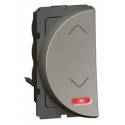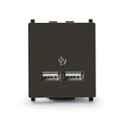Translate:
Types of Switches based available in the market
A switch is a device in a computer network that connects other devices together. Multiple data cables are plugged into a switch to enable communication between different networked devices. Switches manage the flow of data across a network by transmitting a received network packet only to the one or more devices for which the packet is intended. Each networked device connected to a switch can be identified by its network address, allowing the switch to direct the flow of traffic maximizing the security and efficiency of the network. There are different types and brands of switches that help the user with its features. Basic information about the switches is discussed below
D link switch:
With data transfer speeds of up to 200 Mbps at a full-duplex, the D link switch is ideal for quick file transfers, online gaming, and smooth streaming media. It features easy-to-access Ethernet ports with LED indicators per port to easily distinguish link status. Auto MDI/MDIX crossover makes connection a cinch; just plug in your cables and you're ready to go.
The switch saves energy and reduces heat automatically without sacrificing performance or functionality. The switch can detect when a connected computer is shut down or when there is no Ethernet traffic and will put the port in standby mode, saving a substantial amount of power. In addition, the switch optimizes power usage for each port for the length of cable connected to it, using only as much power as is required. Both of these features work together to help you save power automatically.
It requires no configuration, so setup is simple and hassle-free, and you can easily connect multiple computers, share files, music, and video across your home or small office network, or even create a multiplayer gaming environment. The flow control on each port minimizes dropped packets when the ports receiving buffer is full, giving you a more reliable connection for all of your connected devices.
Gigabit switch:
In computer networking, a Gigabit Ethernet switch connects multiple devices, such as computers, servers, or game systems to a Local Area Network (LAN). It also empowers devices like 4K HDTVs and DVRs to connect directly to the internet without depending on Wi-Fi. With the ability to speed up data transfer, it results in faster response time and better frame rate. In general, it expands network capacity via extra ports.
There are many different types of switches in the market. According to the number of devices you have and the people who use the network, you need to choose a relevant switch. If you want to expand your network without the big expense, the basic fiber optic Gigabit switch is a great choice for small and medium environments to boost the performance and efficiency of networks, such as 16-port and 24 port gigabit switches. For home users, an 8-port Gigabit switch is enough. Here, we just introduce the basic concept of the managed and unmanaged switch, PoE switch, and stackable switch to help distinguish the functions of different types of Gigabit Ethernet switch.
Top Sellers

Legrand Arteor 20A 2 Way Round Magnesium Switch With Indicator ( ...
₹1588028% OFF₹9688

Schneider Zencelo 2.1A 2 Module Dark Grey USB Charger, IN8432USB ...
₹3095535% OFF₹16821
PoE switch:
A switch is a device that allows devices on a network to communicate. A PoE switch has the Power over Ethernet functionality built into it. This means you can power devices using network cables.
A PoE switch provides power that can be used to run other devices via the Ethernet cabling. If your network has distributed switches, it's also possible to get PoE pass-through switches. These are themselves powered by PoE from a central source but can also pass power on to endpoint devices such as cameras or phones. There are many devices that can be powered by PoE. However, the amount of power needed can differ. There are different types of PoE switches, a 16 port PoE switch, a 24 port PoE switch, etc.
PoE switches have some great benefits. As they cover both network and power, you will only need one cable for each device, rather than two. This helps when you have limited space to run cables, or your office already has too many cables to organize neatly. PoE is also great for expanding a network where power is an issue. For example, if you want to create a bank of computers in a part of the room with limited power sockets.
Layer 3 switch:
A layer 3 switch combines the functionality of a switch and a router. It acts as a switch to connect devices that are on the same subnet or virtual LAN at lightning speeds and has IP routing intelligence built into it to double up as a router. It can support routing protocols, inspect incoming packets, and can even make routing decisions based on the source and destination addresses. This is how an L3 switch acts as both a switch and a router. Often referred to as a multilayer switch, an L3 switch adds a ton of flexibility to a network.
Layer 2 switch:
A layer 2 switch is a type of network switch or device that works on the data link layer and utilizes MAC Address to determine the path through where the frames are to be forwarded. It uses hardware-based switching techniques to connect and transmit data in a local area network (LAN). An L2 switch can also be referred to as a multiport bridge. There is a ton of confusion about the use of a layer 3 switch because, in a traditional setup, routers operate at layer 3 of the OSI model.
TP link 8 port switch:
The TP LINK 8 Port switch is specially designed for small offices or your home offices. It is equipped with 8 ports that support auto MDI/MDIX, so you don't have to worry about your connectivity issues. Moreover, it is very easy to install. The Plug and Play LED lights of this desktop switch indicate which port is active.
The auto-negotiation RJ45 ports of this Ethernet switch eliminate the need for crossover cables or Uplink ports. Moreover, it is also equipped with a non-blocking switching architecture that forwards and filters packets at full wire-speed for maximum throughput. The 10K Jumbo frame improves the performance of large file transfers significantly. The flow control alleviates the traffic congestion and makes it work reliably. This fast Ethernet switch features innovative energy-efficient technologies that can greatly expand your network capacity with much less power consumption. The power consumption is automatically adjusted according to the link status and cable length.
Conclusion:
We have a general idea about the switches, how it helps the user to connect multiple networks with ease. Different brands have their own features and models of these switches. The user can narrow down the uses and factors based on which they can buy the best switches from Moglix.




